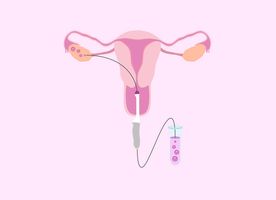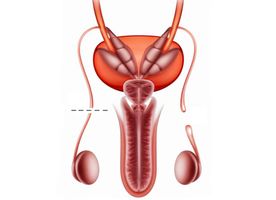Tubal Ligation Reversal in Alvaro Obregon
Search and Compare the Best Clinics and Doctors at the Lowest Prices for Tubal Ligation Reversal in Alvaro Obregon











































































































































































No Time?
Tell us what you're looking for and we'll reach out to the top clinics all at once
What does a Tubal Ligation Reversal Procedure Involve?
Before the procedure, you and your partner will need to get a complete physical exam to find out if there is any condition that might keep you from getting pregnant after a tubal reversal. The physical exam usually includes a blood test, imaging test, and hysterosalpingogram (HSG). Your partner may also need to gets tests such as a sperm count and semen analysis to find out if there is any fertility problem. You and your doctor will need to discuss the success rate and your ability to get pregnant after the procedure. You should also discuss other options for pregnancy.
During the procedure, your doctor will likely use robotic or laparoscopic surgical equipment. A laparoscopic is a small tube with a tiny camera and surgical instrument attached to it. Your doctor will first look at your fallopian tubes using the laparoscopic camera. The tiny camera is put into your abdomen through a tiny incision. If your doctor sees that you have enough fallopian tube left and everything looks healthy, they will perform the surgery.
Once your doctor has decided it is okay to perform the surgery, you will be given general anesthesia. The surgery will also be done with laparoscopy, meaning your surgeon will make several incisions in your abdomen and insert a camera and small instruments to do the surgery. Using the microscopic instruments attached to the end of the laparoscope, your doctor will remove any damaged sections of your fallopian tubes and any devices from your tubal ligation, such as clips or rings that were used to block your tubes. Small stitches are used to reattach the undamaged ends of your fallopian tubes to the uterus. When the tubes are reconnected, your doctor will inject a dye into one end of each tube to make sure that the tubes have been reattached successfully.
Another way to carry out the surgery is a procedure called minilaparotomy. During this procedure, your doctor will make an incision in your abdomen to take the ends of your fallopian tube out of your abdomen. Then, your surgeon will remove the damaged parts of your fallopian tube and reconnect the healthy parts while the tubes are outside your body.
How Long Should I Stay in Alvaro Obregon for a Tubal Ligation Reversal Procedure?
The whole procedure usually takes about 2 to 3 hours. It can be done in a hospital or an outpatient center. If everything goes well and the surgery is completed using “microsurgical” techniques, you may be able to go home around 2 to 4 hours after surgery. However, some women will need to stay in the hospital for 1 to 3 days. After being discharged from the hospital, you will have to stay in Alvaro Obregon for between 1 to 2 weeks or until your doctor gives you the all-clear to travel home. During your stay in Alvaro Obregon you will attend follow-up checkups.
What's the Recovery Time for Tubal Ligation Reversal Procedures in Alvaro Obregon?
The recovery time depends on the surgical method your doctor used. Typically, recovery takes about one to two weeks until you can resume your normal activities. During the recovery period, you may experience pain and tenderness around the incision. To help with the pain, your doctor may prescribe pain medication, or you can take over-the-counter medication. Many patients also feel extreme weakness during the recovery period. You should not bathe for 48 hours after your surgery and your stitches will dissolve.
What sort of Aftercare is Required for Tubal Ligation Reversal Procedures in Alvaro Obregon?
You will need to follow all post-operative instructions that your doctor gives you. You will not have any activity or dietary restrictions after the surgery, but you should avoid any heavy lifting or sexual activity for a certain period of time. Your doctor will give you a timeline on how long you should avoid these activities. Normally, attempts to conceive can begin within four weeks after the procedure. Do not rub the incision, especially when you want to clean it, instead pat it gently.
What's the Success Rate of Tubal Ligation Reversal Procedures in Alvaro Obregon?
The success rate of tubal ligation reversal can vary widely, depending on various factors, including maternal age. Women under 35 tend to have a much higher success rate. Generally, 50% to 80% of women who have tubal ligation reversal can have successful pregnancies. While the success rate for women under 35 is 70% to 80%, women over 40 only have around 30% to 40% success rate.
Like any surgery, tubal ligation reversal also has potential risks and can lead to complications. Although it is rare, you will need to make sure that you understand all the risks and complications. Risks associated with this procedure include:
- Infection
- Bleeding
- Injury to nearby organs
- Ectopic pregnancy, a life-threatening condition where a fertilized egg grows outside of your womb
- Inability to get pregnant after the procedure
- Anesthesia complications.
For an in-depth analysis and a look at how Tubal Litigation Reversal Procedures are performed, watch this short video
Are there Alternatives to Tubal Ligation Reversal Procedures in Alvaro Obregon?
You may wish to consider in vitro fertilization (IVF) as an alternative to tubal ligation reversal. During IVF, your eggs are mixed with your partner’s sperm outside of the womb in a lab. The fertilized eggs are implanted directly into your uterus. You can also consider IVF if you do not get pregnant after a tubal ligation reversal.
This information has been accurately sourced and verified by a medical professional for its accuracy, however, we strongly recommend you to consult with your doctor before pursuing medical procedures overseas.





